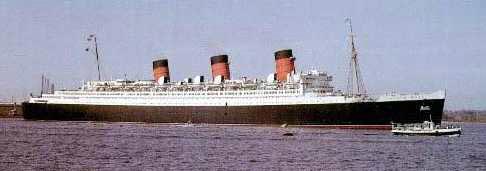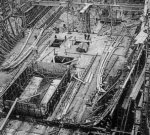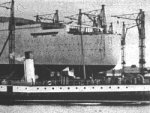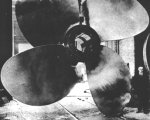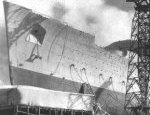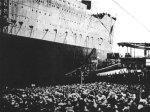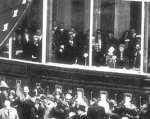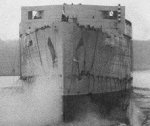With one of the largest merchant fleets in the world, Cunard had lost many ships in the great war, particually the Lusitania. In the dwindeling years of the roaring 20's, they needed to secure their future in ocean travel. Their current greyhounds of the Atlantic were Mauretania (1907), Aquitania (1914) and Berengaria (1914), formerly the Imperator. The company needed to maintain it's weekly service with two ships, three were just too hard to fill and maintain. Two new vessles were needed to keep service speeds at 29 knots and provide a weekly route between America and England. With the advent of the oil power ships, this was an easy goal. Plans were quickly drafted for some of the most beautiful ships afloat.
The ships grew on paper, and eventually reached a length of over 1000 feet and a weight of 81,000, never had this been acheived. As with the Olympic class ships, no facilities big enough existed to accomodate these huge ships. Cunard managed to have companies build slip ways, dry docks and berths big enough for the ships however, and in December 1930, the first keel plate was laid for Hull 534.
Unfortunatly, the grip of depression tightened it's grip on Britain and many thousand ship workers were laid off and Cunard had to make the decision of halting work on the ship, and a year after the keel plate was laid, on the 10th of December, 1931, the ship yard fell silent and Hull 534, 80% complete was left to rust.
In the earl;y years of the 20th century, Cunard had to go to the government for funding of the Lusitania and Mauretania, pointing out that White Star was under American own and supplied with American money. This time however, the White Star Line was the one in danger. Having never regained ground after the sinking of the Titanic, the IMM, it's American owners sold it to the Royal Mail Steam Packet Company. Now, the RMSPC was in trouble too and offered White Star up for sale. Cunard had thought about buying it's former rival, but managers said it would be un feasible. Now, the British government wanting to bring the companies out of the depression offered them a load of �9.5 million if the two companies merged. The both accepted and in March, 1934, Cunard White Star Ltd. came into being.
Now, with the company back with money, the town of Clydebank and it's massive ship building facilities re-awoke and on Tuesday, April 3rd, 1934, work began again on 534.
534 was 1019 feet long, and as has been said for so many ships before, the largest moving object ever made by the hands of man in all history. She also was 81,000 tonnes and was a great achievement for British engineering as she took shape. She had 160 water tight compartments (compare that to the 16 on Titanic), was 12 decks high, had a height from keel to the top of the forward funnel of 184 feet (each of the funnels progressing aft was slightly lower than theone that proceeded it) and had four 20 foot diametre propellers that could turn at 200 rpm. Powering these were four sets of quadrupal expansion turbines, each having 257,000 hand set blades.
To ensure the safety of the passengers and crew of the ship, 24 lifeboats were fitted. Built by Hugh McLean and Sons LTD. of Glasgow, they were 36 feet long by 12 feet and could each hold 145 people, for a total of 3480. Seeing the ship could carry at it's maximum 3240, she had ample space - a lesson leart from the Titanic.
There are a lot of stories about how 534 got her name. Because Cunard usually used the suffox 'ia' and White Star had 'ic', people thought that because of the merger, a new naming trend was needed. They Cunard directors decided to name their ships after England's Queens. A rumour was started that the new ship would be named Queen Victoria, but first, they needed King George V's permission. Sir Ashley Sparks, then Chairman of Cunard Line's American offices, had gone to King George V to ask permission. He however neglected to mention the name they were choosing, stating that 'Cunard wanted to name their new ship after the greatest British Queen.' King George V's wife, Queen Mary was in the room at the time and announced "I would be delighted."
On September 26th, 1934, over 200,000 people crowded thw sides of the Clyde River for the launch of Britain's greatest acheivement. The daw was cold and overcast, and rail fell almost constantly, but none the less, many thousands of people, including the King and Queen of England came to witness the moment.
The crowd was still clueless as to what the ship was to be named as Queen Mary walked forward from under the sheltered canopy with the dignitaries. She walked out and stood infront of the bow of the ship and cut a cord, releasing a botton of Australian white wine that was broken across the bows before moving to the microphone.
"I am happy to name this ship the Queen Mary, I wish success to her and all who sail in her..." she announced, and the massive roar from the crowd let everyone know they approved as the massive hull of the liner slid down the ways and into the water for the first time. Drag chains weighing 2000 tonnes brought her to a halt in the water. Unfortunatly, the length of the ship caused her to ground on the opposite end of the river, dispite recent dredgings to accomodate the liner. Damage was minimal, if anything else, and the liner was towed to the fitting out berth where she would be transformed into a massive luxury liner.
|


